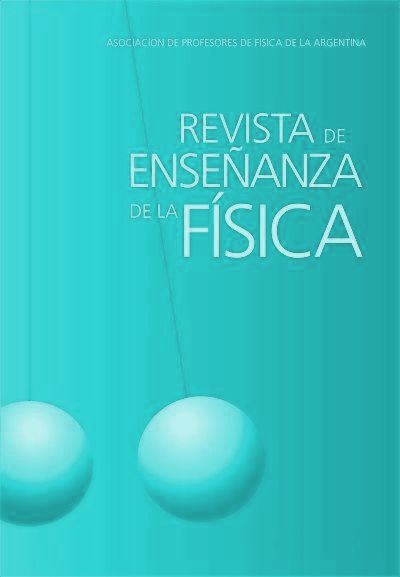The exceptional aurora of 1989 in Patagonia
DOI:
https://doi.org/10.55767/2451.6007.v32.n1.28940Keywords:
Aurora; History; 1989; Patagonia; Didactics of AstronomyAbstract
In March 1989, an extremely unusual event occurred: the observation of an aurora from Patagonia. These shocking phenomena, products of the Sun-Earth interaction through the solar wind, magnetic fields and atmosphere, are little known and generally associated with some conceptual inaccuracies, which have an unwanted impact on their learning: to call them "Northern Lights", to associate their existence to the geographical poles and not link them to the interaction between the Earth and the Sun, among others. There have been numerous references to auroras in the northern hemisphere since ancient times, but much less in the southern regions of America, due to their less frequent observation because the magnetic PS is displaced in the direction of Australia with respect to the geographical PS. The didactic approach and the dissemination of the auroras must include the integral treatment of the Earth as a magnetic field generator with poles and regions of a behavior much different from the geographical ones, in a natural environment determined mainly by the Sun.
References
Allen, J. H. (1989). Solar and geomagnetic activity during March 1989 and later months and their consequences at Earth and in near-earth space. En Olsen, R. C., Proceedings of the Spacecraft Charging Technology Conference, Volume I. Monterrey, California: Naval Postgraduate School. Disponible en http://hdl.handle.net/10945/46693 Consultado 01/12/19.
Allen, J., Sauer, H., Frank, L., Reiff, P. (1989). Effects of the march 1989 solar activity. Eos, Transactions American Geo-physical Union, 70(46), 1479-1488. doi: 10.1029/89EO00409
Beatty, K., Collins Petersen, C., Chaikin, A. (1999). The new Solar System. 4th Ed. Cambridge University Press.
Cade, W. B., III. (2013). The First Space Weather Prediction. Space Weather, 11, 330–332, doi: 10.1002/swe.20062.
Complejo Plaza del Cielo. (2014). ¿Por qué no se ven auroras en Esquel? Ciclo de Charlas del Complejo Plaza del Cielo, 28 de mayo de 2014 (quinta charla del séptimo año).
Daglis, I., Akasofu, S-I. (2004). Aurora – The magnificent northern lights. Recorder, 29(9). Disponible en: https://csegrecorder.com/articles/view/aurora-the-magnificent-northern-lights. Consultado el 01/12/19.
Eather, R. H. (1980). Majestic lights: The aurora in science, history, and the arts. Washington: American Geophysical Union.
Falck-Ytter, H. (1999). Aurora: The Northern Lights in Mythology, History and Science. Hudson NY: Floris Books.
Hamacher, D. (2013). Auroras in australian aboriginal traditions. Journal of Astronomical History and Heritage, 16(2), 207-219. Disponible en http://www.narit.or.th/en/files/2013JAHHvol16/2013JAHH...16..207H.pdf . Consultado el 01/12/19.
Hayakawa, H., Mitsuma, Y., Fujiwara, A., Ebihara, Y., Kawamura, A. D., Miyahara, H. (2016). Earliest datable records of aurora like phenomena in the astronomical diaries from Babylonia. Earth, Planets and Space, 68. doi: 10.1186/s40623-016-0571-5
Hayakawa, H., Mitsuma, Y., Fujiwara, A., Kawamura, A. D., Kataoka, R., Edihara, Y., Kosaka, S., Iwahashi, K., Tamazawa, H., Isobe, H. (2017). The earliest drawings of datable auroras and a two-tail comet from the Syriac Chronicle of Zuqnın. Publications of the Astronomical Society of Japan, 69(2). doi: 10.1093/pasj/psw128
Laundal, K. M. y Østgaard, N. (2009). Asymmetric auroral intensities in the Earth's Northern and Southern hemi-spheres. Nature 460(7254), 491-493. doi: 10.1038/nature08154
NASA. (2006). The history of auroras. https://www.nasa.gov/mission_pages/themis/auroras/aurora_history.html Con-sultado el 01/12/19.
Odenwald, S. (2001). The 23rd cycle. Learning to live with a stormy star. New York: Columbia University Press.
Siscoe, G. L., Silverman, S. M., Siebert, K. D. (2002). Ezekiel and the Northern Lights: Biblical Aurora Seems Plausible. Eos, Transactions American Geophysical Union, 83(16), 173-179. doi: 10.1029/2002EO000113
Simpson, J. (2018). The first recorded aurora australis? Journal of the British Astronomical Association, 128(1), 33-37.
Vaquero, J., M., Vázquez, M. (2009). The Sun recorded through history. Scientific data extracted from historical docu-ments. Springer.
Willis, D., Vaquero, J., Stephenson, F. R. (2009). Early observation of the aurora australis: AD 1640. Astronomy & Geo-physics, 50(5), 5.20–5.24. doi: 10.1111/j.1468-4004.2009.50520.x . Consultado el 01/12/19.
World Data Center for Geomagnetism. (2019). Magnetic North, Geomagnetic and Magnetic Poles. http://wdc.kugi.kyoto-u.ac.jp/poles/polesexp.html Consultado el 01/12/19.
Servicios en la web de predicción de auroras, en tiempo real (todos consultados el 01/12/19):
Mapa global en tiempo real que da la probabilidad de ver una aurora desde cualquier punto sobre la superficie te-rrestre. https://earth.nullschool.net/#current/space/surface/level/anim=off/overlay=aurora/winkel3/
University of Alaska Fairbanks, Geophysical Ins. Aurora Forecast. https://www.gi.alaska.edu/monitors/aurora-forecast
KHO Auroral forecast service. http://kho.unis.no/Forecast.htm
Space Weather Prediction Center NOAA. Aurora – 30 min forecast. https://www.swpc.noaa.gov/products/aurora-30-minute-forecast
Space Weather Services, Bureau of Meteorology, Australia. http://www.sws.bom.gov.au/
Aplicación gratuita para celulares “Aurora Forecast 3D”: http://kho.unis.no/Forecast3D.htm
Downloads
Published
Issue
Section
License

This work is licensed under a Creative Commons Attribution-NonCommercial-NoDerivatives 4.0 International License.
Aquellos autores/as que tengan publicaciones con esta revista, aceptan los términos siguientes:Los autores/as conservarán sus derechos de copiar y redistribuir el material, bajo los términos estipulados en la Licencia de reconocimiento, no comercial, sin obras derivadas de Creative Commons que permite a terceros compartir la obra bajo las siguientes condiciones:
- Reconocimiento — Debe reconocer adecuadamente la autoría, proporcionar un enlace a la licencia e indicar si se han realizado cambios. Puede hacerlo de cualquier manera razonable, pero no de una manera que sugiera que tiene el apoyo del licenciador o lo recibe por el uso que hace.
- NoComercial — No puede utilizar el material para una finalidad comercial.
- SinObraDerivada — Si remezcla, transforma o crea a partir del material, no puede difundir el material modificado.
- Los autores/as podrán adoptar otros acuerdos de licencia no exclusiva de distribución de la versión de la obra publicada (p. ej.: depositarla en un archivo telemático institucional o publicarla en un volumen monográfico) siempre que se indique la publicación inicial en esta revista.
- Se permite y recomienda a los autores/as difundir su obra a través de Internet (p. ej.: en archivos telemáticos institucionales o en su página web) antes y durante el proceso de envío, lo cual puede producir intercambios interesantes y aumentar las citas de la obra publicada. (Véase El efecto del acceso abierto).










